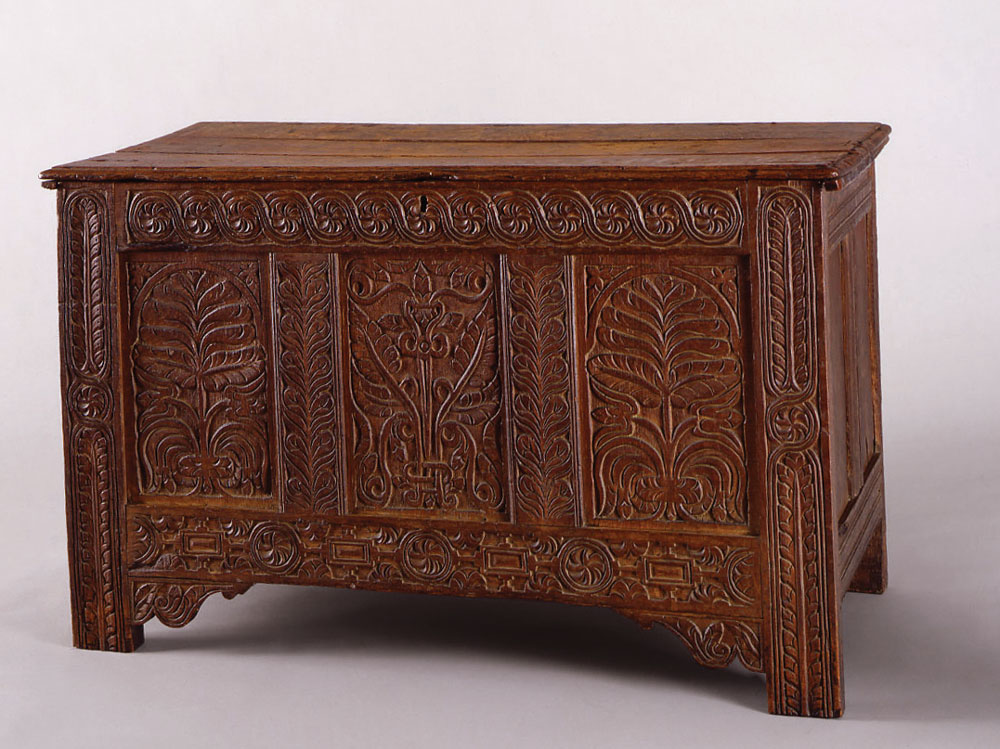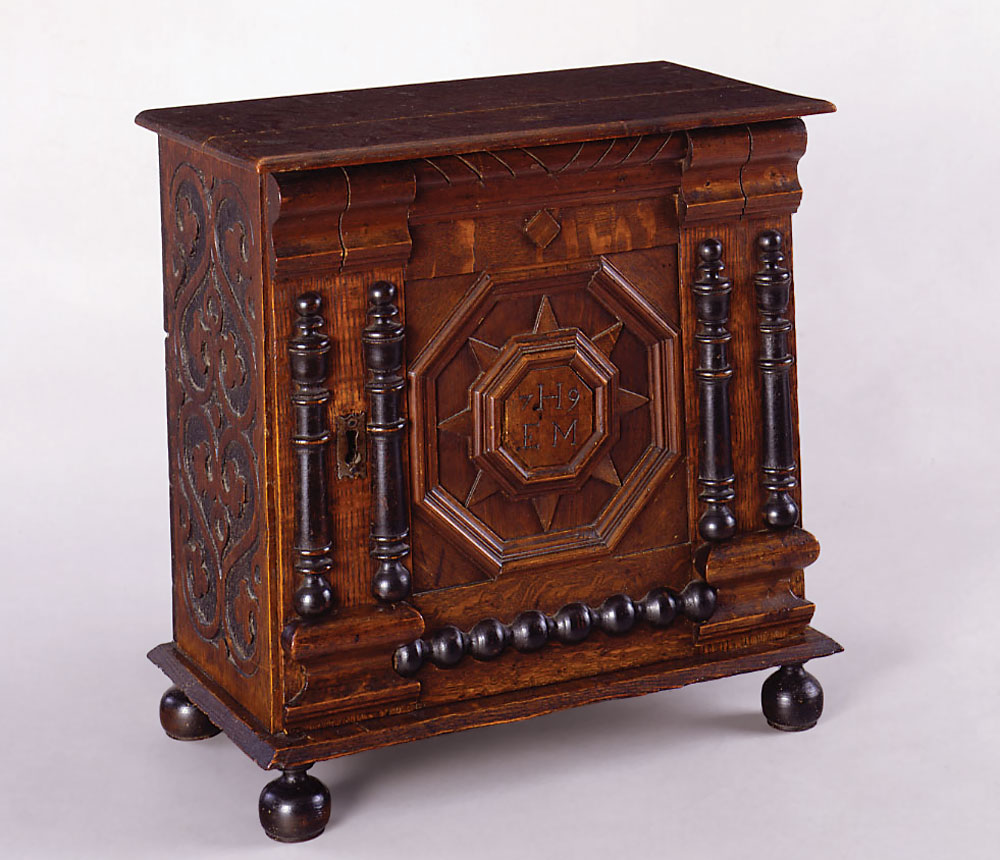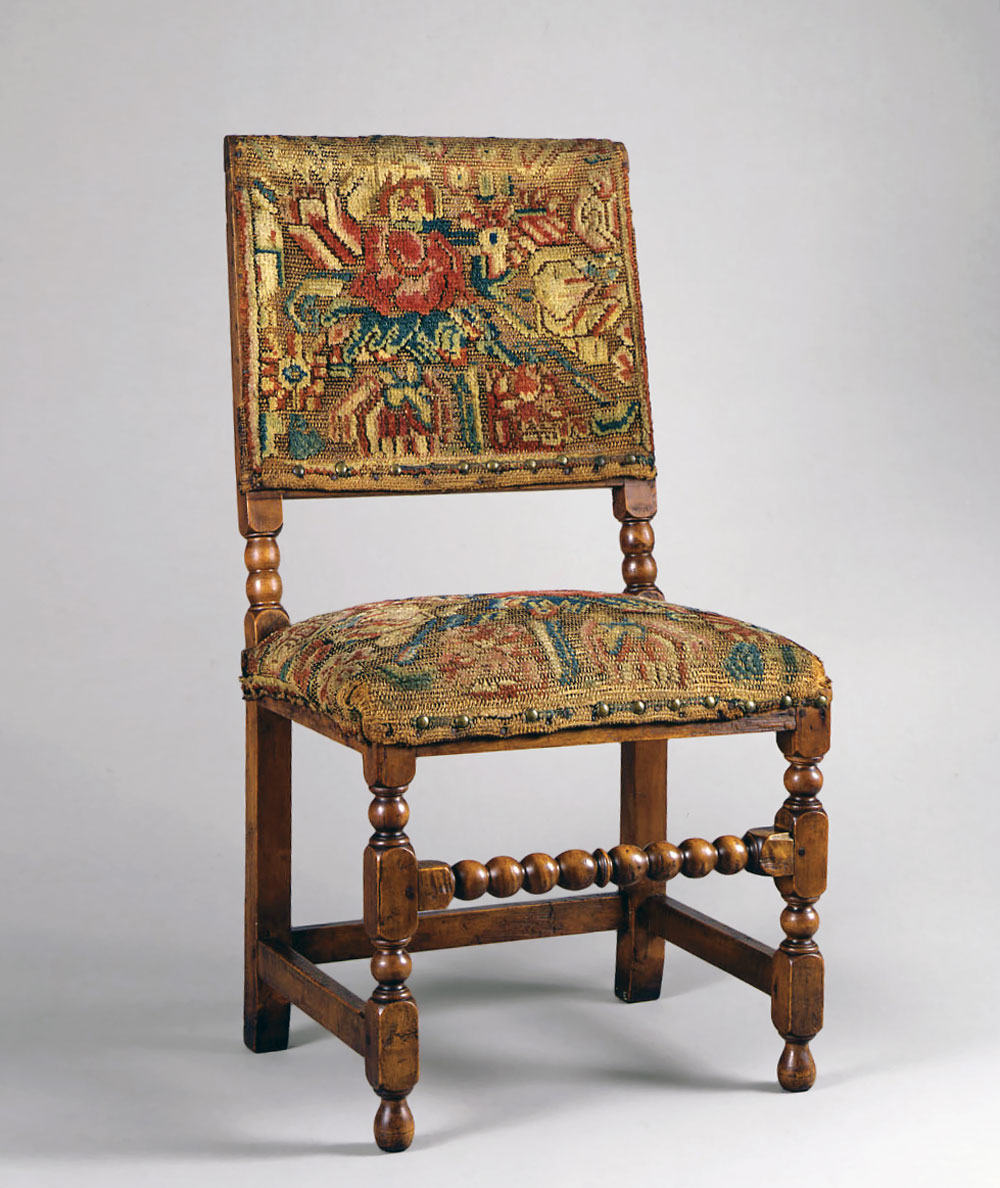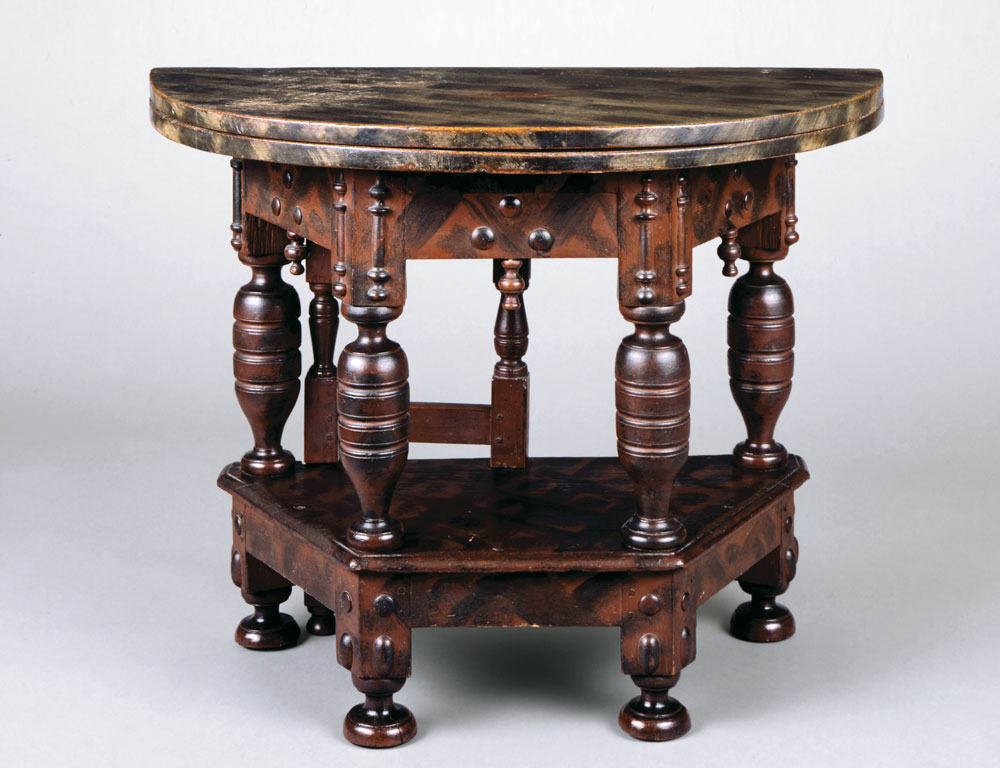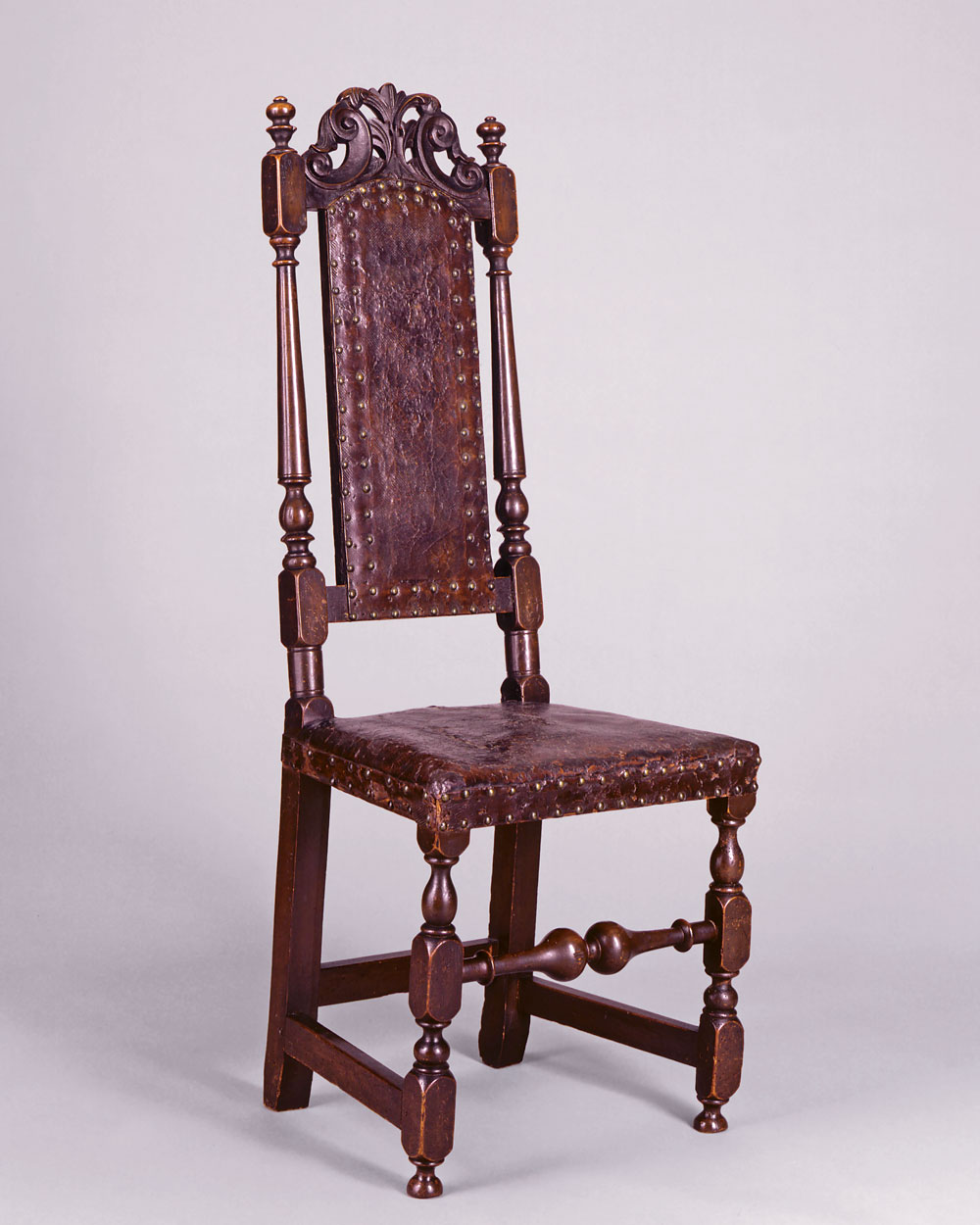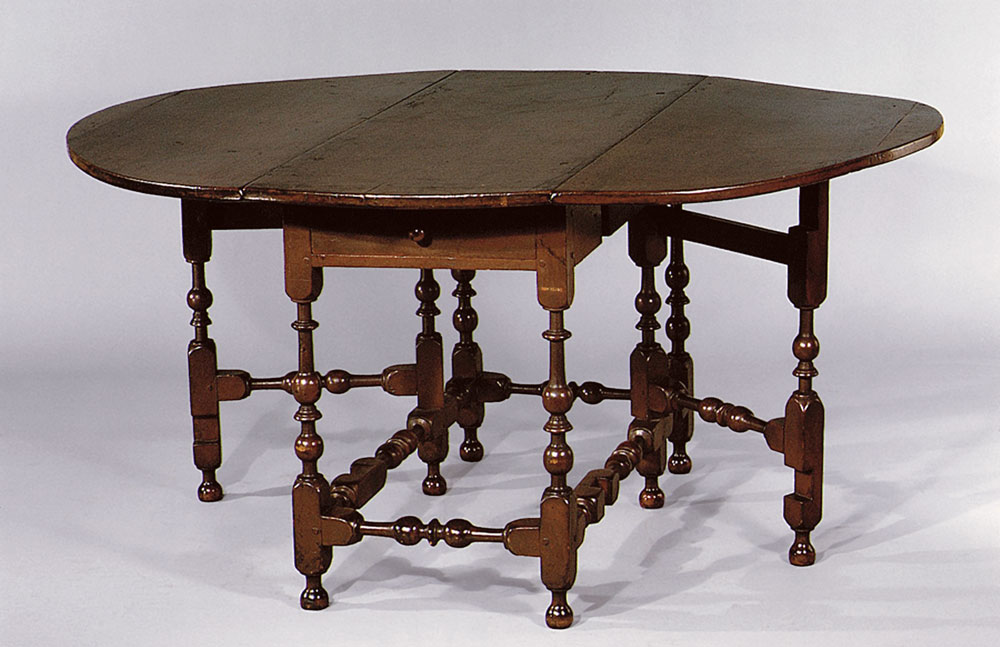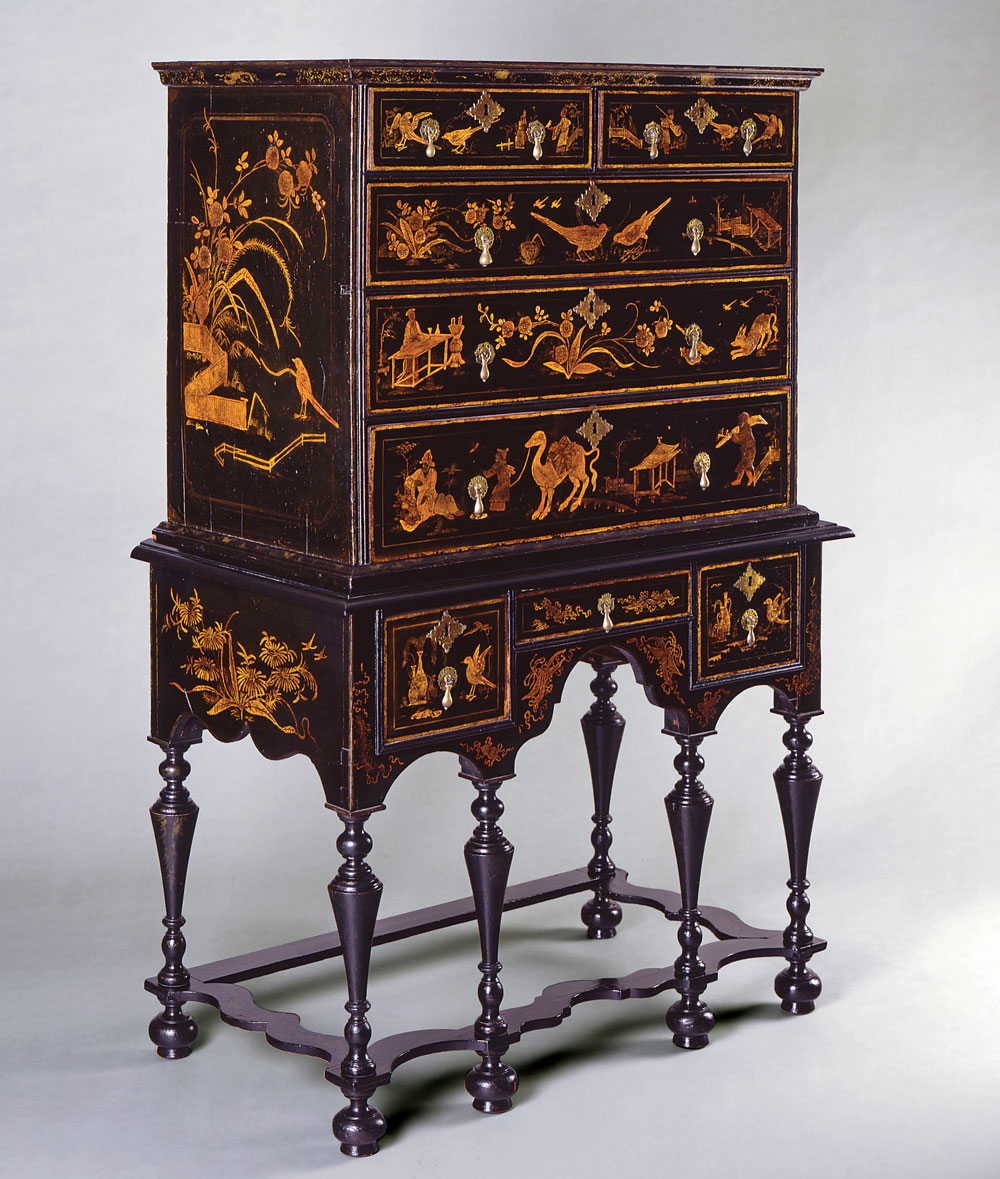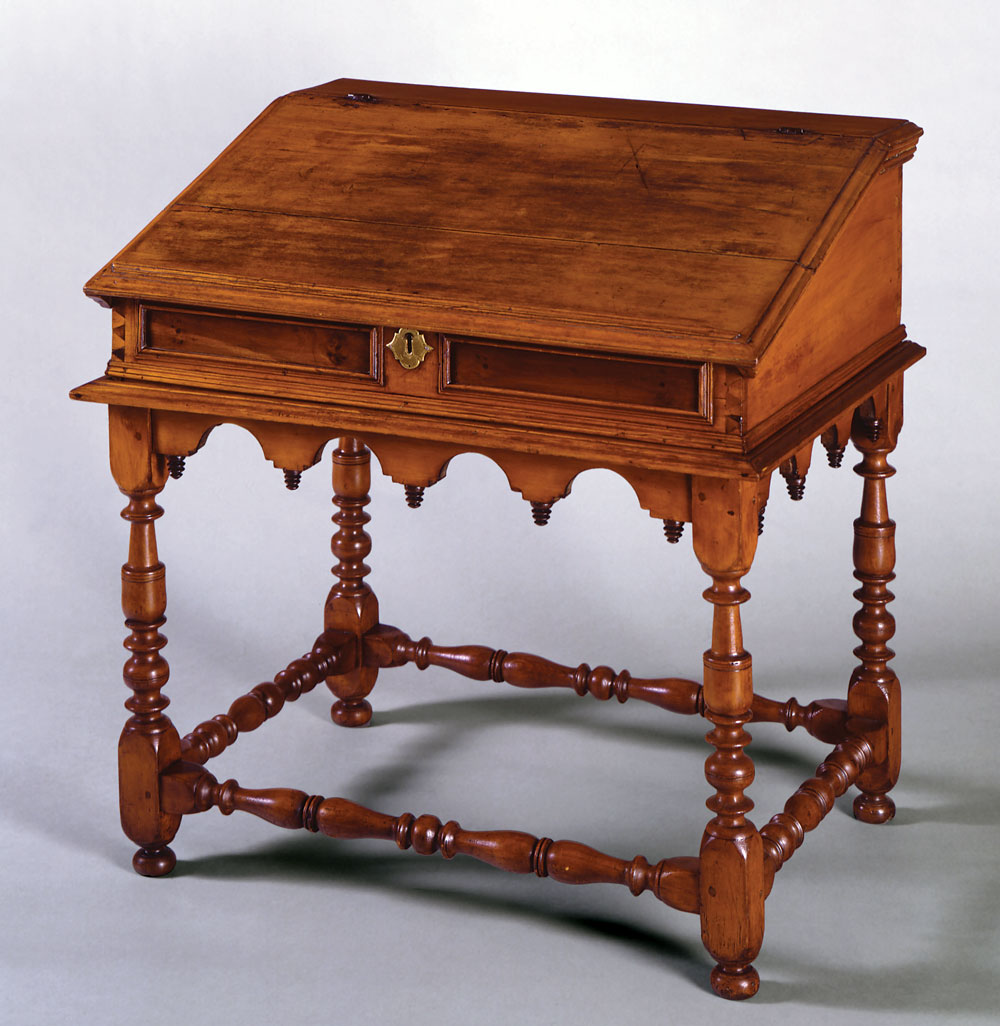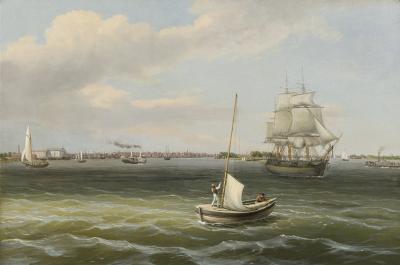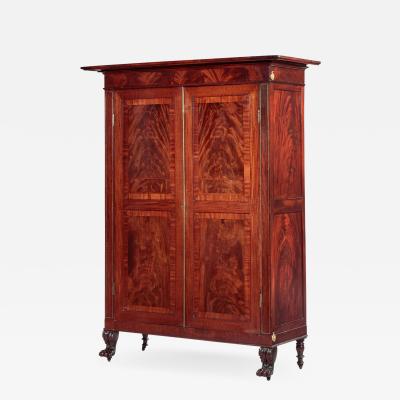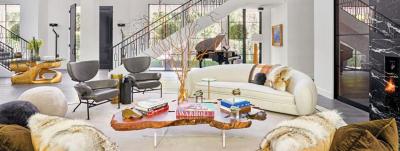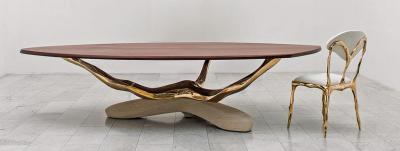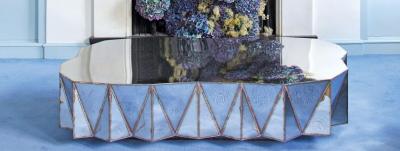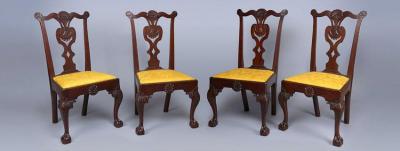Early Colonial Furniture at the Metropolitan Museum of Art
The Metropolitan Museum began to form a collection of American furniture of the colonial and early federal periods almost exactly one hundred years ago. The driving force behind this effort was Henry W. Kent, assistant to Robert W. de Forest, the secretary to the museum’s board of trustees and its president in 1913. The catalyst was the 1909 Hudson-Fulton Celebration commemorating both the discovery of the Hudson River by Henry Hudson in 1609 and Robert Fulton’s first successful navigation of the river in a steamboat in 1807. As part of that state- and citywide celebration, the museum mounted a large loan exhibition: one section consisting of seventeenth-century Dutch paintings to represent Hudson, who was employed by the Dutch East India Company when he found the river named after him; and, at Kent’s suggestion, a second containing examples of American decorative arts and paintings from the seventeenth century to about 1815, the year of Fulton’s death. The latter was the first comprehensive exhibition of American art held in a major art museum and its success proved that American “domestic arts” were worthy of attention.
Chief among the lenders of furniture, particularly of the seventeenth century, was H. Eugene Bolles, a Boston lawyer, who had begun collecting in the 1880s and by 1909 had gathered over four hundred pieces of furniture and innumerable other objects. Kent had had his eye on that collection since at least 1907, and before the close of the Hudson-Fulton exhibition he convinced de Forest that it should be acquired. De Forest persuaded Mrs. Russell Sage, widow of a successful financier, to purchase the collection and give it to the Metropolitan. That gift formed the nucleus of the American furniture collection, providing both a broad range of representative objects and individual pieces of distinction (Figs. 1, 2, 6).
Natalie K. (Mrs. J. Insley) Blair, of New York City and Tuxedo Park, New York, was another paramount figure in the creation of the collection. She collected mainly in the 1920s, focusing on prime examples from the early and late colonial periods. Her donations, made mostly in the 1940s and early 1950s, greatly enriched the Metropolitan’s holdings with objects that stand out for their rarity, quality, and condition (Figs. 3, 4, 5). Over the years, the collection has grown in size and quality also through single acquisitions (Figs. 7, 8), made as often by gift as by purchase.
A new catalogue of the museum’s American furniture in the seventeenth-century and William and Mary styles presents a broad spectrum of the forms made during the early colonial period and includes outstanding examples of the different modes of decoration in fashion at the time. The furniture comes predominantly from New England, with a smaller representation from New York and Pennsylvania. Regrettably there are no examples from the South. This reflects both the fact that considerably more furniture of this period, particularly of the seventeenth century, has survived from New England than from the other regions and the way in which the museum’s collection was formed. Below are some descriptions of furniture showcased in the collection catalogue.
The richness and vigor of the carving make this the premier example in the Metropolitan’s American furniture collection of the carved seventeenth-century style. The chest is a prime representative of the Ipswich, Massachusetts, school of craftsmanship that has long been identified with William Searle and Thomas Dennis. Searle is documented in Ipswich in 1663 and Dennis by 1668, when he married Searle’s widow. The carving on Searle-Dennis furniture clearly has its source in a tradition of florid carving that flourished in Devonshire, England, at the beginning of the seventeenth century and was centered in Exeter. Floral designs similar to those on the front panels of this piece are found on chests in that region, and the strapwork pattern of roundels alternating with lozenges seen on the lower front rail occurs there on furniture and interior woodwork. Searle and Dennis both came from Devon, and their elaborately carved furniture illustrates unequivocally the direct transmission of an English regional style to the New World.
This highly ornamented cabinet, its front a miniature architectural facade, achieves a visual impact that far transcends its actual small size. Made in 1679, in all probability for Ephraim and Mary Herrick of Beverly, Massachusetts, this is one of four related cabinets, all initialed and dated, that have been linked to original owners living in Salem, Massachusetts, and adjoining towns in Essex County. The cabinets form part of a larger group of furniture that is attributed to the Symonds family shop tradition and includes chests with drawer, chests of drawers, and cupboards. The founder of this school of joinery, which appears to have set the style for the region, was John Symonds (before 1595–1671), who came to Salem in 1636 from Great Yarmouth in Norfolk, England. He trained two sons, and all three had apprentices. As illustrated by the facade of the cabinet, with its paired half columns, corbels, and dentil molding, the overall designs of this school of joinery are architectural in concept. As is typical of the seventeenth-century applied-ornament style in general, the individual appliqués are made of several kinds of wood that originally differed in color and added to the complexity of the design. The cabinet is fitted on the interior with ten drawers of varying sizes and was probably meant for the safekeeping of documents and other small valuables.
Upholstered chairs were the most advanced and most fashionable form of seating in the seventeenth-century style. This chair represents a type that was popular in northern Europe and England throughout most of the seventeenth century. It is characterized by a rectilinear joined frame that has a padded rectangular seat and back panel and a gap between the seat and the backrest, which is capped by neither a crest nor finials. Chairs of this form and with turnings in a repeat ball pattern, such as the one illustrated here, were based on English models of the second half of the seventeenth century and were produced in Boston from about 1660. The relatively tall back of this example indicates that it was made toward the end of the seventeenth century, when more elongated chair backs were becoming the fashion. The great rarity of this chair lies in its original Turkey-work covering and upholstery foundation. Turkey work, a woven fabric with a knotted and cut wool pile, was produced in England by professional weavers in imitation of Turkish carpets. It was exported to Europe and America in sets of seats and matching backs, for which frames were made locally to suit. More commonly, such chairs were covered in leather or a wool fabric.
The table’s history in the Appleton family of Ipswich points to an origin in northern Essex County, Massachusetts. Its style and structure link it to a major unidentified shop that was active in that area principally during the 1680s and 1690s and is notable above all for the unusual variety and elaboration of the cupboards it produced. Very generally, the boldness of design and a sense of movement uncommon in seventeenth-century forms that distinguish the complex compositions of that shop’s cupboards are reflected in the table’s vigorous interplay of angular and circular shapes. Much more specifically, the half columns that are applied to the stiles under the top and flank what was originally a center drawer are in the same pattern as those that flank the drawer under the middle shelf on three cupboards that bear dates from 1680 to 1684. The turned pillars on the table, ornamented with the broad concave bands flanked by fine grooves that are typical of this school of craftsmanship, relate to those on the same cupboards, but in this case there is no exact match. This table, with its polygonal frame, two-part hinged circular top, pillar legs, and open shelf, is of a form that was being made in England by the early seventeenth century. The type is rare in American furniture; only this and two other tables of this general design are known. The present decorative painting is not original to the piece.
Tall and stately, this is a fine example of the fully developed William and Mary-style Boston high-back chair, which is characterized by an elongated back panel set between turned stiles and crowned by a pierced and carved crest rail in a design of C-scrolls and foliage. Standard features of this high-back form include rear posts that have urn-and-ball finials; long columnar turnings above a short baluster, reel, and ring at the height of the back panel; and vertical legs that angle backward near the bottom to form raked feet that counter the cant of the long stiles. Typically the front legs are in a block-and-baluster pattern and the side and rear stretchers are plain. The front stretcher turnings have broken free of the convention that previously placed them between blocks and limited their diameter to the dimensions of those blocks, making possible the dramatic contrasts of thick and thin evident here, where the inflated bases of the balusters that flank the reel vividly convey a sense of Baroque energy. This chair is distinguished by the retention of its original Russia leather covering and under-upholstery. (Russia leather, as it was called at the time, was the most desirable kind during this period and was exported to Boston via London.) In the hierarchy of Boston tall-back chairs, this one ranks a notch below the top model, which came with a stretcher carved in a design similar to that on the crest rail. Less expensive options were domestic leather, a plain top, and a banister back and rush seat in lieu of leather.
This table is part of a sizable group of tables of several types that have related turnings and are attributed to Rhode Island. They compose the largest coherent body of such objects from early-eighteenth-century New England that do not have legs turned in a pattern of symmetrically opposed balusters — the scheme favored in Boston and used in most of New England. Instead they feature a very individual interpretation of the generic design of a baluster above a spherical form — the formula commonly found on tables made from New York on south and on English examples. The Rhode Island version of the latter design, here finely executed and quite stylized, consists of a high baluster with a globular base and long, straight, tapering neck above a ball form. The baluster and the ball are separated either by a ring or, more distinctively, by a disk with an ovolo upper profile and a flat bottom, as on this piece. Oval tables with hinged leaves that hang down from either side of a stationary top came into fashion in the colonies toward the end of the seventeenth century and became the preferred form for dining. Such tables in the William and Mary style typically had the leaves, when open, resting on auxiliary rectangular swinging supports and are now commonly called gateleg tables. Among the descriptive appellations used at the time was “table with falling leaves.”
The japanned decoration on this high chest creates a dazzling, fanciful world, in which animals, flowers, and Far Eastern figures and structures, all depicted in gold, happily coexist without any regard to scale. Japanning, a Western imitation of Eastern lacquerwork, was the height of fashion in America during the first half of the eighteenth century. American examples from the early colonial period have survived only from Boston, where a japanner was first documented in 1712. A splendidly showy surface treatment, in which motifs were raised, gilded, and varnished, japanning was applied to standard Western furniture forms, such as this high chest. The high chest of drawers, built in two sections with an upper case containing generally four tiers of drawers and raised up on a separate base, was the prime form of case furniture in the William and Mary style in America. It expresses the aesthetic introduced by early Baroque influences in the vertical emphasis of the design, the use of curves in the form and bold contrasts of thick and thin in the turnings, and in dramatic surface decoration. Veneering, particularly with richly figured burl wood, was the chief means of achieving an active and arresting surface. The most lavish and striking effects were provided by japanning.
This striking desk—basically a portable writing box or book box with slanted lid, set on a separate base—has no known close counterpart. It represents a unique coming together of European and English furniture-making traditions that speaks eloquently of the diverse population of craftsmen and clients in the New York colony at the time it was made. The inscription in Dutch inside the lid indicates an owner of Netherlandish descent, and the desk portion shares some distinctive attributes with a kast (a type of early-eighteenth-century cupboard made by Dutch settlers) that is ascribed to Kings County, New York (now Brooklyn). For example, the singular manner in which the desk box is joined corresponds exactly to that of the base of those kasten: the front is dovetailed to the sides and the sides to the back, with all joints exposed and showing analogous neatly cut, sharply angled dovetails. The base of this piece also exhibits features that point to direct Continental influence, but in this instance probably that of craftsmen of French descent. The design on the upper part of the legs—an urn followed abruptly by a tapered columnar segment—is one encountered primarily in French or French-inspired turnings. But the general character of the strongly projecting molding at the top of the base and the way in which the loose desk box is supported and held in place are indebted to Anglo-American high chests.
American Furniture in The Metropolitan Museum of Art. I. Early Colonial Period: The Seventeenth-Century and William and Mary Styles (Yale University Press, December 2007), is published at 464 pages with 162 b/w and 159 color illustrations. For more information visit www.yalepress.yale.edu or The Metropolitan Museum of Art’s store at www.metmuseum.org, or call 800.468.7386.
-----
Frances Gruber Safford is the recently retired associate curator in the Department of American Decorative Arts, The Metropolitan Museum of Art. She is the author of the American Furniture in The Metropolitan Museum of Art. I. Early Colonial Period.
Photography by Gavin Ashworth.
















